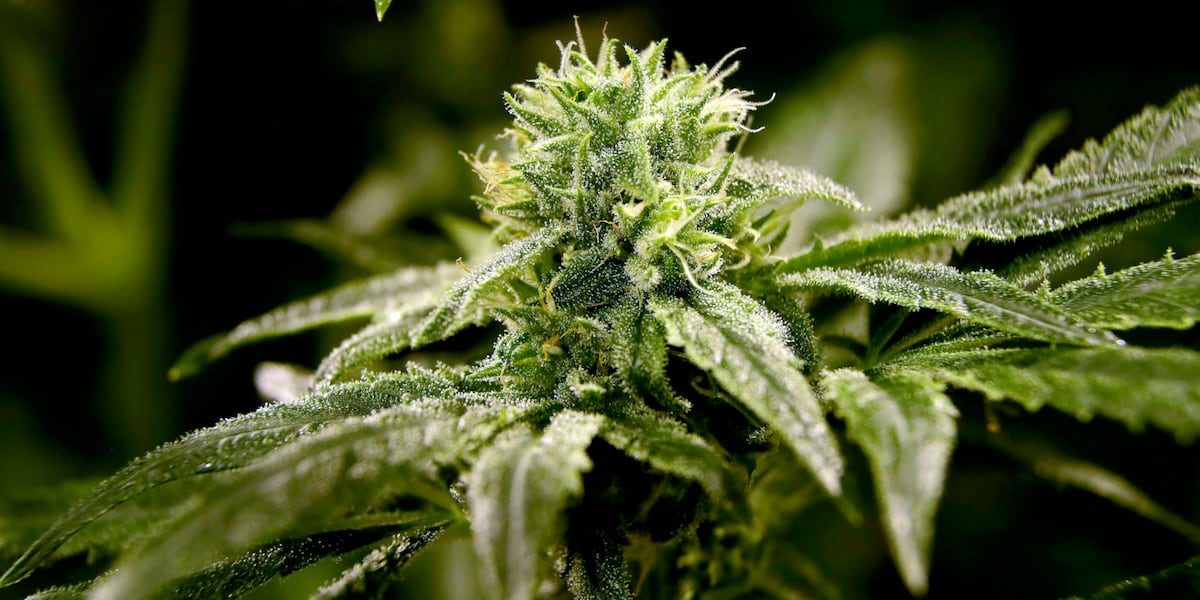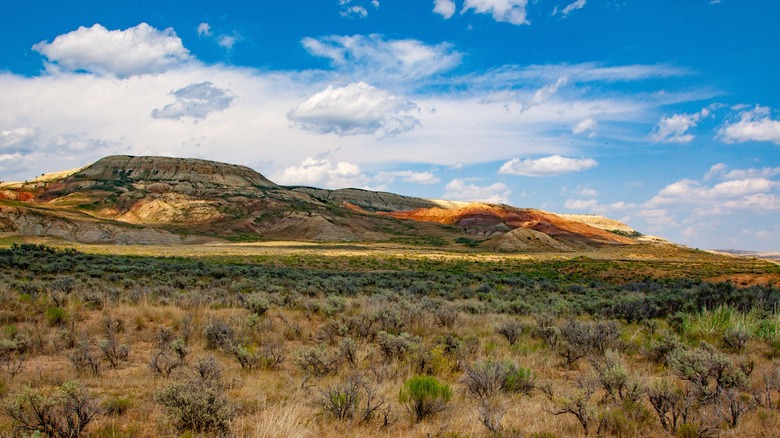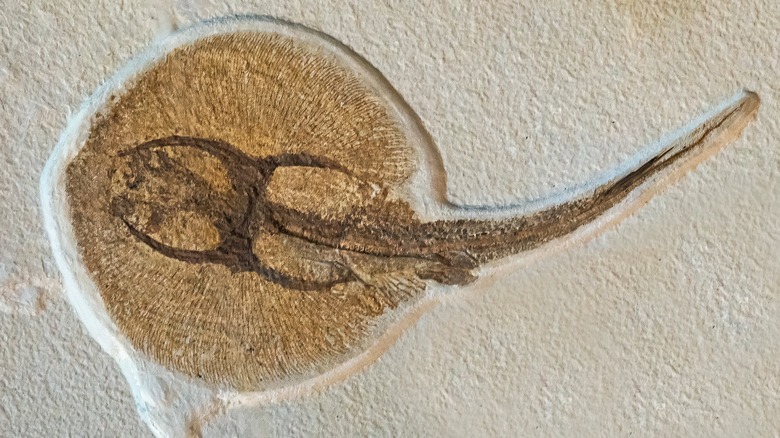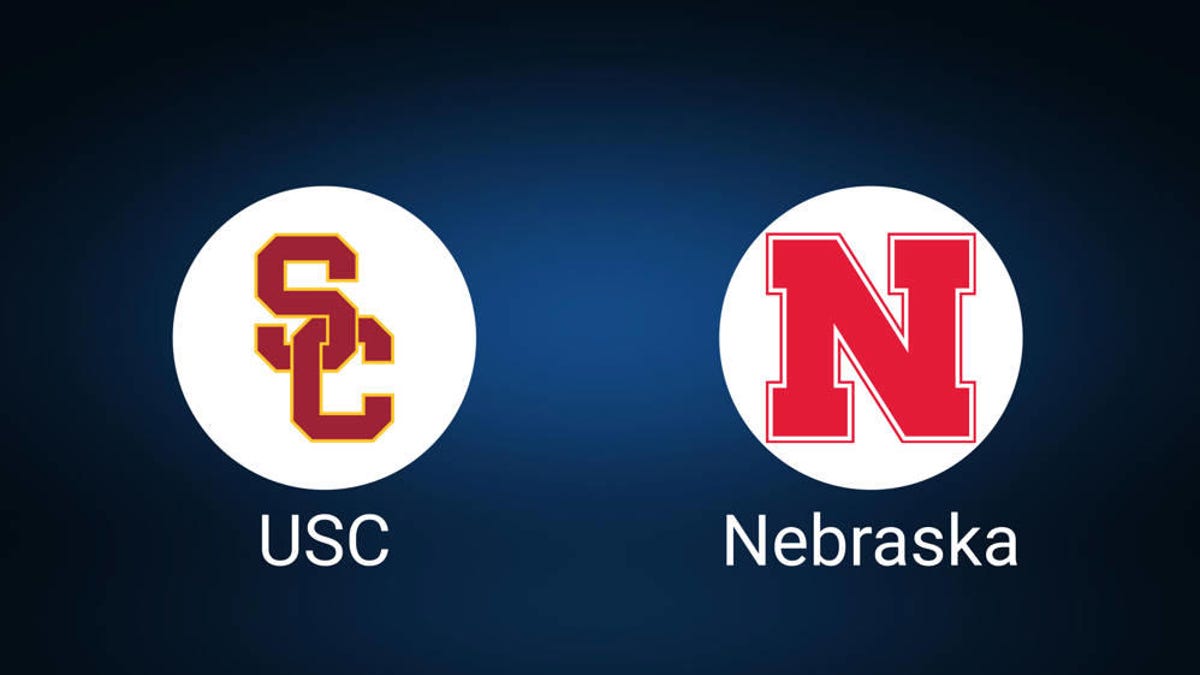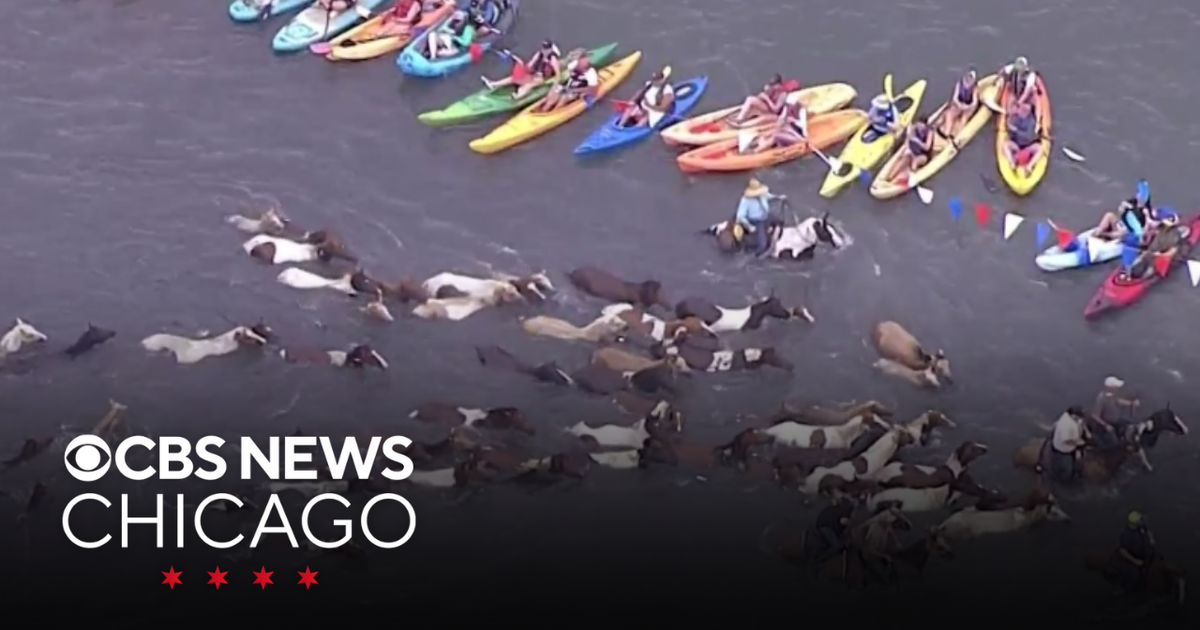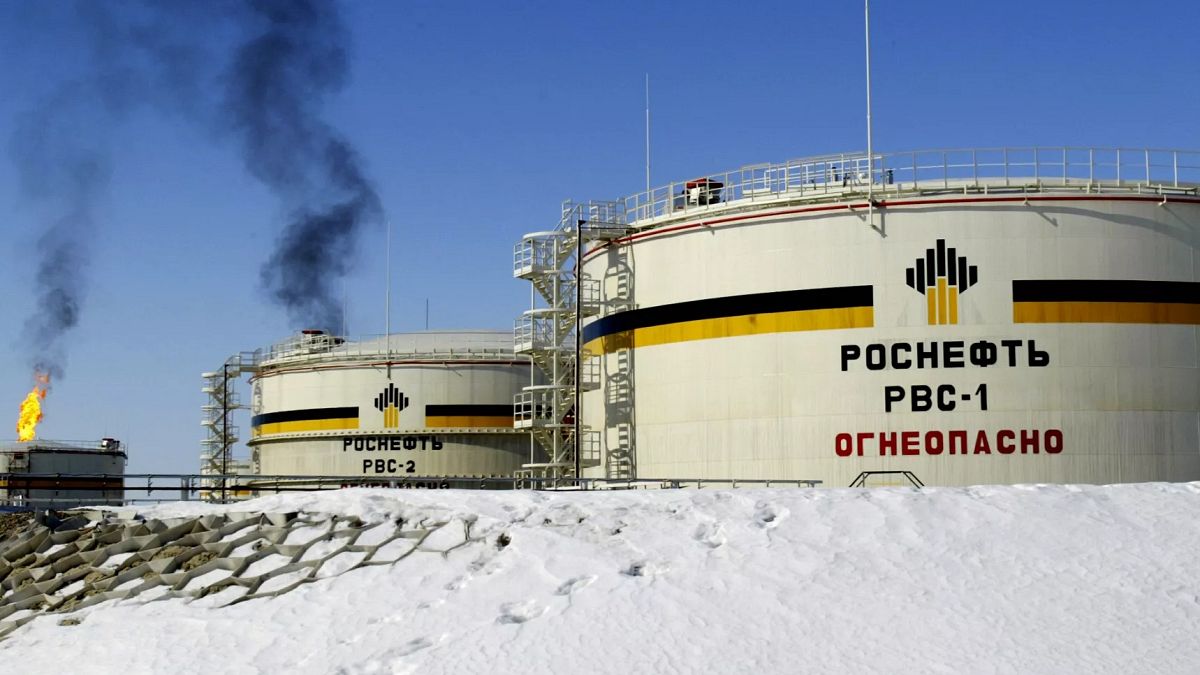Wyoming
Hemp Businesses Fail to Revive Suit Targeting Wyoming Crackdown
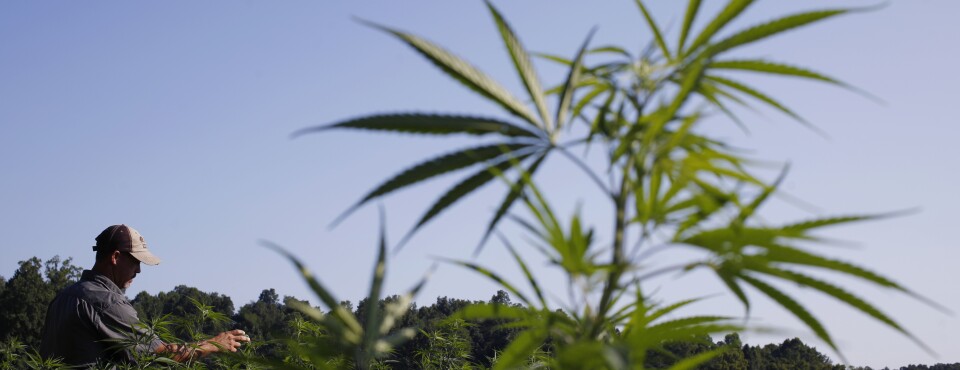
A group of hemp distributors couldn’t convince a federal appeals court Monday that their lawsuit challenging Wyoming’s stringent hemp regulations was wrongfully dismissed.
The businesses failed to state a cognizable preemption claim, failed to demonstrate a constitutional violation, and haven’t established a regulatory taking of their commercial personal property, Judge
Wyoming “need not provide just compensation every time it adjusts its regulatory scheme, even if those changes incidentally impair or even destroy the businesses of some,” Hartz said. Judges

Wyoming
Fake beaver dams help restore Wyoming wetlands – WyoFile

My rubber boots squelched as I grabbed another 5-gallon bucket full of mud from a Wyoming Game and Fish Department herpetology technician. We performed an awkward handoff before I dumped the mud on the ground in front of my sinking boots. The squelching continued as I used my boots to mash the fresh mud up against willow branches woven among 4-inch-wide posts rammed in a streambed.
Our little team, the herpetology technician, a Trout Unlimited project manager and another volunteer like me, were finishing up the first in a series of nearly a dozen fake beaver dams on a creek on the west side of the Snowy Range Mountains in southeast Wyoming. They’re technically called beaver dam analogues — since with their complex patterns of sticks and mud, they’re supposed to imitate real beaver dams. Although I’m not sure my noisy rubber boots really compare to the efficacy of the beaver tail.
The dams’ purpose, as the name implies, is to slow streamflow, lightly flooding banks and providing the water more time to seep into the ground.
If we’re lucky, a family of beavers will come along and make this analogue their home, even tearing out our handiwork to construct something they like better that’s more permanent and sturdier. Beavers are, after all, professional furry engineers, who perfected their craft over millennia.
Our fake beaver dams aren’t meant to last forever. They’ll be maintained annually for about five years (unless real beavers take over earlier), but the result when established in the right place can be remarkable, restoring and rejuvenating wetlands, replenishing the water table, keeping water higher up in systems longer in the year, and providing habitat for everything from insects, frogs and toads to elk and moose, and yes, even beavers.
Stream restoration experts like Steve Gale, the Wyoming Game and Fish Department’s aquatic habitat biologist, can and do extoll the benefits of beavers and beaver dams. And while the rest of us standing in the stream bed see their utility, we also agreed with Gale when he said: “Who doesn’t want to play in the water with mud and sticks?”
Bigger than just beavers
Before European settlers streamed onto this continent, bringing an insatiable demand for beaver pelts, the rodents lived in streams, creeks and rivers almost everywhere. They dammed any flowing water they could find and had a hand in shaping large swaths of the nation.
While beavers can be a nuisance, falling ancient cottonwoods in parched areas and flooding creeks and irrigation ditches, they’re also one of the best examples of ecosystem engineers, Gale said, and their services have been missed. Without beavers and beaver dams, rivers run faster and cut down into the soil, they wash away sediment and move water faster from headwater states like Wyoming to other states downstream.
Biologists have tried reintroducing beavers across the country — the Army Corps of Engineers even famously airdropped beavers into an Idaho wilderness area — with mixed success.
So now watershed managers are turning to contraptions like the ones a team of nearly 20, including Game and Fish employees and volunteers from all over the state, helped build in mid-September.

We stood on the banks of the South Fork of Lake Creek in the Pennock Wildlife Habitat Management Area and listened to Gale walk us through the process. In the last few decades, the South Fork of Lake Creek had cut deeper and deeper into the earth, ultimately sinking lower than the floodplain and as a result offering little water to surrounding vegetation. When runoff hit each spring, the water rushed down as plants sat parched on the banks.
“We lost riparian habitat and riparian width, which is important for calving areas,” he said. “We’re doing this work primarily for the deer, elk and moose.”
Beavers had been reintroduced here before, but even the industrious rodents had a hard time building dams and ponds deep enough to keep them alive and safe through winter.
We were here to help, hopefully. We would spend the bulk of the day pounding posts made from trees across the width of the creek over a quarter-mile-long stretch and then weaving bendy willow branches through the posts. After building a wall of willows, we would use buckets of mud and sod to fill in the cracks. With any luck, water would begin backing up almost immediately, eventually filling and slowly trickling over the tops.
Life or death
As beaver dam analogues become increasingly popular, biologists with state agencies and nonprofits are teaming up to place them in streams across the landscape.
Austin Quynn, the Trout Unlimited project manager helping direct our team, worked with groups of youth corps members over the last couple summers building, maintaining and repairing hundreds of analogues on a stream called Muddy Creek southwest of Rawlins to help habitat for four native fish species: flannelmouth and bluehead suckers, roundtail chubs and Colorado River cutthroat. Last summer, beavers came from miles downstream and tore out dozens of analogues in one stretch. He sounded amused that his work was destroyed, because in its place, they’d built a massive dam that must have been what the beavers wanted and needed.

Some of the dams blew out from spring runoff, scouring the creek bed of sediment and leaving behind gravel that cutthroat trout could use for spawning.
Deep pools created by the analogues — and eventually beavers themselves — also offer fish refuge from the heat on mid-summer days.
On the east side of the Snowy Range, Wendy Estes-Zumpf, Game and Fish’s herpetological coordinator, and others built eight analogues in a creek which contains one of the last boreal toad populations in southeast Wyoming. It had been a stronghold for the creatures, but in the absence of beavers, the creek became incised, leaving little wetland habitat for toads to breed and survive.
A few seasons after Estes-Zumpf’s team erected the fake beaver dams, boreal toad populations have started to come back. She counted as few as four toads on past spring surveys and found almost 30 this spring including multiple age classes.
Beaver dam analogues aren’t a silver bullet for a drought-stricken West, Gale said, but for some species and some creeks, they could be the difference between life and death.
Plus, it’s hard to beat a day playing in the mud.
Wyoming
Hikers Who Love Wildlife Should Visit Wyoming’s Underrated National Monument In The Fall – Explore
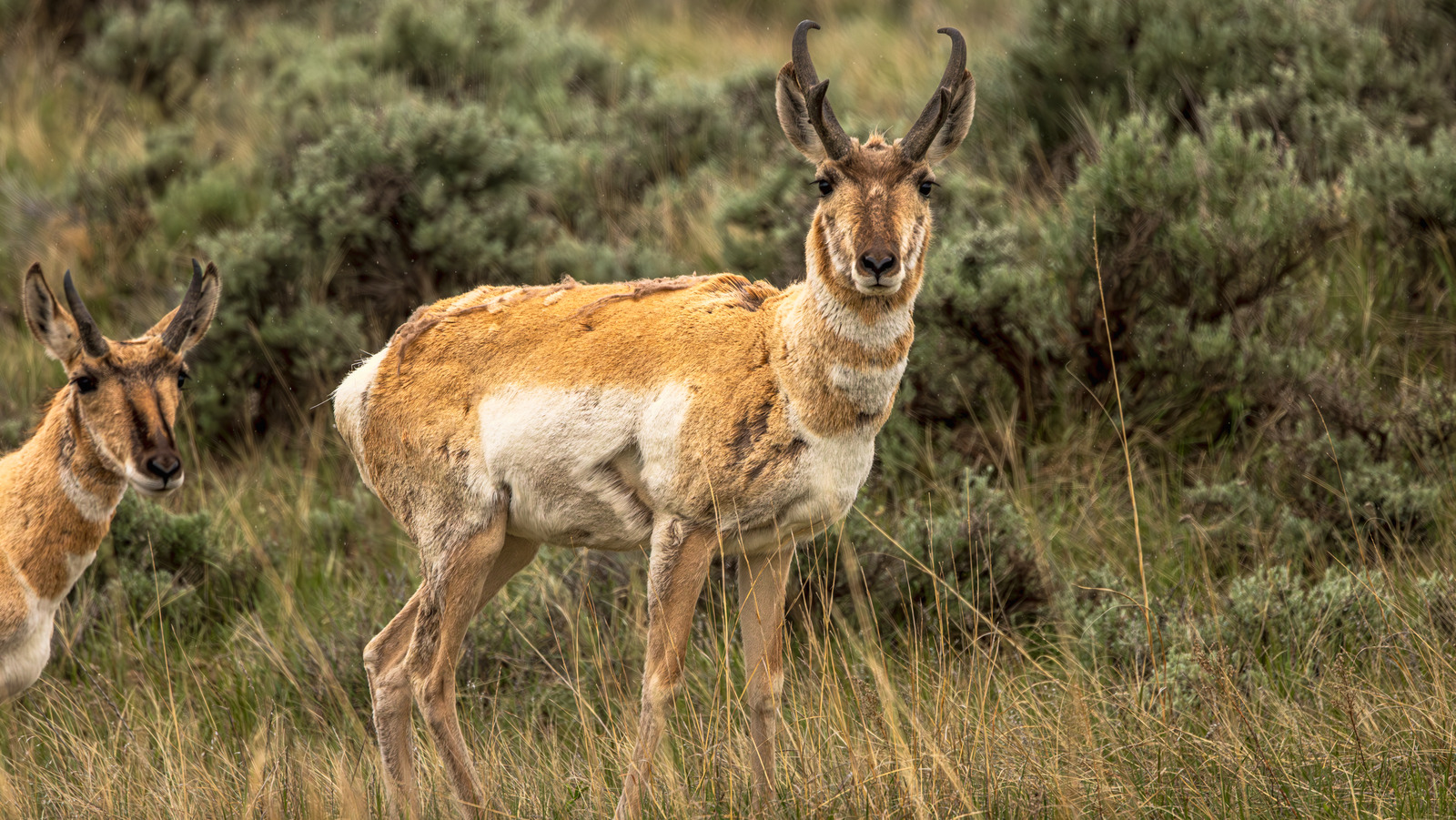
If you don’t live in Wyoming, the sight of a pronghorn antelope is positively magical. These thickly-coated mammals are like a cross between a deer and a wild goat, and look so peaceful as they graze in western grasslands. Yet the moment they’re startled, a pronghorn springs into action, sprinting up to 60 miles per hour across the plains. When you spot a pronghorn on the move, you believe it’s the speediest land animal in North America. They’re also an evolutionary oddity; they look a lot like African antelopes, but they’re genetically unrelated. Believe it or not, their closest relatives are giraffes.
This is just one species you may spot in the scrubland around Fossil Butte National Monument. Shaped like a giant, striated bottle cap, Fossil Butte is a big hill composed of sedimentary rock and speckled with vegetation. The multicolored surface may remind visitors of the Dakota Badlands, as may the surrounding treeless expanses. In a state full of natural wonders — from the jagged peaks of the Grand Tetons to the cylindrical monolith of Devils Tower — Fossil Butte is easily overlooked.
Moreover, this national monument in Wyoming’s southwest corner is difficult to reach without a long drive in the backcountry. But intrepid travelers will be rewarded with big skies and eponymous fossils. And, like this underrated Wyoming state park that’s a must-visit for wildlife lovers, Fossil Butte is a fantastic ecosystem for spotting wildlife.
The prehistoric origins of Fossil Butte
Animals have lived in this spot for at least 50 million years, but back then, most of its inhabitants had fins: the land mass that would become Fossil Butte lay was at the bottom of Fossil Lake. Over the eons, deceased marine specimens left permanent impressions in the emerging rock faces. Many of the fossils here are shockingly clear, giving scientists a vivid portrait of the sizes, shapes, and textures of various lifeforms.
So far, paleontologists have identified 27 fish species and 100 different kinds of insects. The Fossil Butte visitor center displays more than 2,000 of the fossils discovered here, including the “fish wall,” “turtle wall,” and “insect end case.” The center also has an extended physical timeline, representing different stages of geology since Earth was formed, helping patrons appreciate just how ancient this region is.
If you’re looking for fauna that still roams these parts, head outside. The grounds are crisscrossed with two main hiking routes: Historic Quarry Trail and Fossil Butte Nature Trail. Together, the trails cover about four miles and are well-maintained. More rustic alternatives include Cundick Ridge Trail, Eagle Nest Point Trail, and Rubey Point Trail. None of these trails is too difficult, and you’d be hard-pressed to get lost in such a wide-open space, but do make sure to bring water, snacks, and sunscreen, especially on hot days. (These are some of the hiking safety tips everyone should know.) From the trail, you’re likely to spot pronghorns in the surrounding grasses, as well as white-tailed prairie dogs and ground squirrels. You’re less likely to encounter a bobcat, mountain lion, moose, or badger, but rest assured, they’re out there.
Getting to Fossil Butte and where to stay
Fossil Butte is definitely off the beaten path. Two hundred miles south of Yellowstone National Park and more than 350 miles from Wyoming’s state capital Cheyenne, this national monument requires effort to visit. Interestingly, Fossil Butte is closer to Salt Lake City, Utah than it is to any major Wyoming destination, and you can drive from that city’s airport — a major hub — to the entrance of Fossil Butte in a little over two hours.
This is a great location to get away from it all; the landscapes from the highway are rugged desert and prairie as far as the eye can see. You can drive for miles without passing so much as a service station. You could easily weave Fossil Butte into a scenic road trip from Salt Lake City to Yellowstone National Park. One consolation for venturing out so far is that entrance to Fossil Butte is free.
The closest hotels to the national monument are nestled in the little town of Diamondville. This place doesn’t have quite 700 residents, but the nearby tourist attraction supports several accommodations, most under $100 per night. Note that Diamondville isn’t next door; you’ll have to drive about 12 miles to reach town, so keep an eye on that fuel gauge. If you come during warmer months, you can hop over to Bear Lake State Park in Utah, a popular spot for swimming and water-sports. It may give you an idea what Fossil Lake looked like all those ages ago.
Wyoming
Way Off The Beaten Path Are State’s Most Unspectacular ‘Entering Wyoming’ Signs
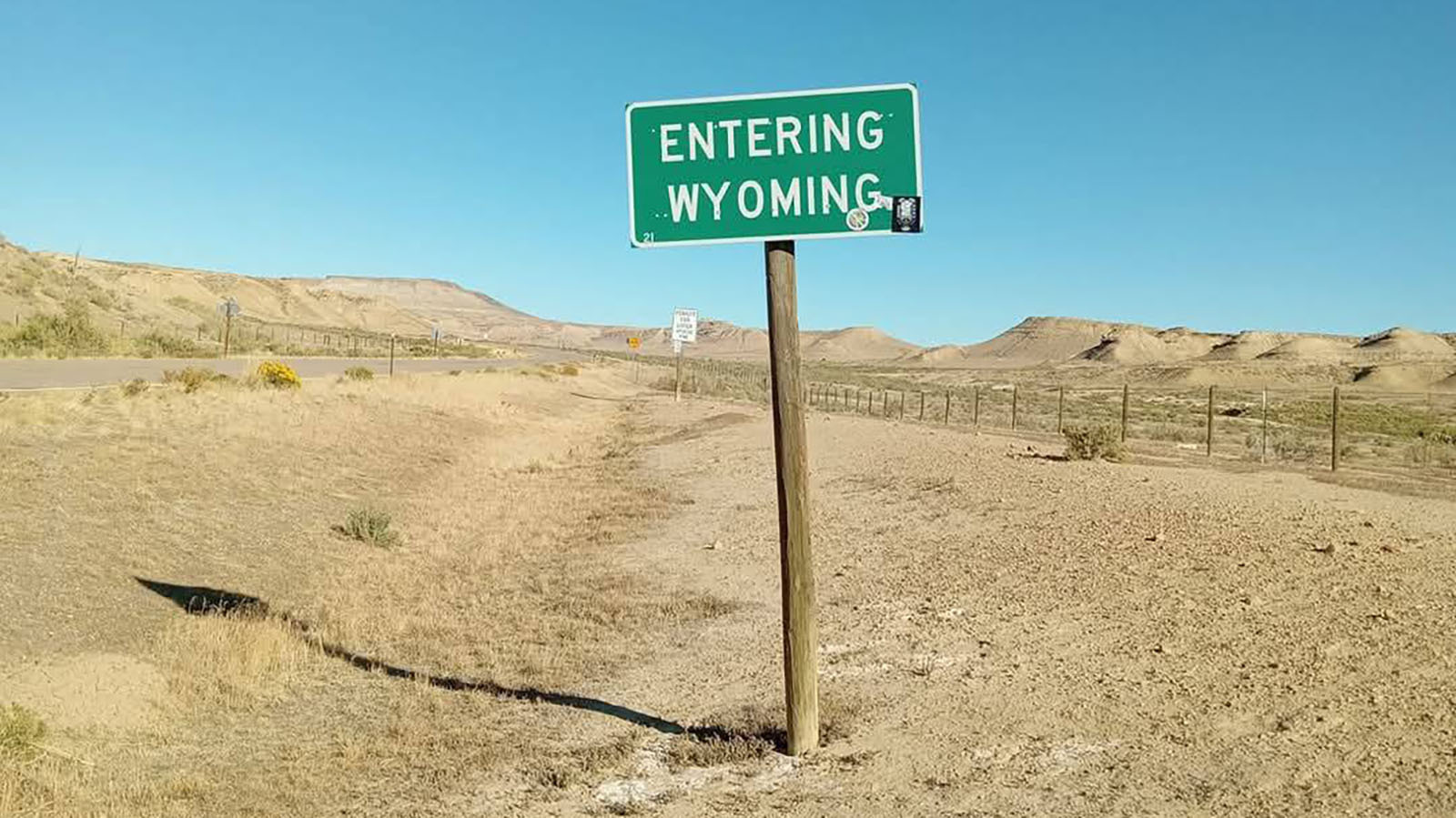
Anyone traveling north into Wyoming along Colorado State Highway 125 will pass one of the many large “Colorful Colorado” signs that announce when motorists enter and leave the state.
As they speed by, they might not even notice the lonely, simple green highway sign immediately to their right that tells them they’ve reached Wyoming.
The message is an unspectacular “Entering Wyoming” — short and to the point, but not necessarily sweet or welcoming.
A weary traveler driving toward Baggs might not give another of the unambiguous green road signs a second look. Nevertheless, it’s there and doing its job.
“We think that people appreciate knowing when they’ve crossed into another state,” said Jordan Young, deputy public affairs officer with the Wyoming Department of Transportation.
Entering, Not Welcoming
Drivers on Interstates 80 and 90 and other major highways are welcomed to Wyoming with large, lavish signs. They’re perfect for pull-offs and photo ops for first-time visitors.
WYDOT just replaced the signs along seven primary corridors entering Wyoming from Colorado, Montana, South Dakota, and Utah. This happens every eight years to give the state’s major points of entry a fresh look.
Unlike the minimalist “Enter Wyoming” signs, these measure either 4 feet by 8 feet, or 8 feet by 16 feet for interstate signs.
“People love these signs,” Doug McGee, WYDOT’s Public Affairs Officer, told Cowboy State Daily in October 2024 when the new ones were announced. “I would stake at least $1 that it’s the second most popular sign for photos in Wyoming, behind the Yellowstone National Park entry signs.”
There are many less-traveled roads that cross state lines into Wyoming, and they have their own signs letting drivers know they’ve entered the Cowboy State. Unlike those along the major corridors, these are basic information and not photogenic.
There’s a reason for that, Young said.
The volume of traffic heading toward Cheyenne along I-25 is significantly higher than the volume on Wyoming Highway 230 or other smaller roads, so there’s less reason to invest in a warm welcome.
“It’s also a safety thing,” Young said. “We’re always looking to give people or drivers as much information as possible as they’re driving without distracting them.
“An ‘Entering Wyoming’ sign can help people give law enforcement or first responders a better idea of where they are in relation to different signs, mile markers, and things like that.”
That much is undeniable.
When you pass the “Entering Wyoming” sign, you’ve entered Wyoming.
There’s another reason to keep these signs simple. WYDOT makes its own road signs in-house, and “Entering Wyoming” is smaller and more economical than “Welcome to Wyoming” should anything happen to the sign.
“When a sign has been broken, damaged, or stolen, the green signs are an easy way to fill the space while working on an interim sign, if there is one,” Young said. “Also, the ‘Entering Wyoming’ signs don’t get stolen quite as much, not that I’m giving anyone any ideas.”
Out, In, Out, In
There aren’t any specific federal or state mandates requiring signs to be posted along every road entering Wyoming. Nevertheless, there are several “Entering Wyoming” signs out there.
“We try to put them wherever anyone might enter Wyoming for the first time,” Young said.
WYDOT even seems to have embraced the “fun” side of placing these signs.
Jordan doesn’t know every spot where there’s an “Entering Wyoming” sign, but she can recall one place where WYDOT put in the extra effort on signage.
“We have a few signs on a section of U.S. 212 in the northeast corner of Wyoming,” she said. The Beartooth Highway “cuts through the corner of the state. You can’t even get to it without leaving Wyoming and coming back into Wyoming through Montana.”
The Beartooth Highway starts and ends in Montana, but most of it stretches across Wyoming. That’s one spot where it’s educational, and somewhat entertaining, to know when you’ve crossed the state line as drivers meander in and out of Wyoming and Montana.
Not Entering A Bidding War
People like the “Welcome to Wyoming” signs, and some are willing to pay big money to get one.
When the last batch of “Welcome to Wyoming” signs were taken down, they were sold at a public auction. When the auction ended in April, 21 signs sold for over $107,000.
Jackson real estate agent Sam Haack was one of the bidders eager to own one of those signs.
He bought one of “the big seven” that stood in Niobrara County alongside U.S. Highway 18 near the South Dakota state line for $9,754.12.”
“I originally went for the one on the western side of the Wyoming-Idaho line between Wilson and Victor,” he said. “That was the closest sign to me, and it was 90% covered with stickers.
“But someone outbid me and paid over $10,000 for that one.”
Several months later, Haack doesn’t regret his purchase in the slightest, although his financial advisor hasn’t shared the same sentiment.
“He told me not to buy anything, including gold, that doesn’t produce money,” he said. “If it just sits there, don’t buy it. This is one of those things that just sits there, but I’ll say it has intangible returns to it.”
As someone willing to pay a premium for a “Welcome to Wyoming” sign, Haack said he would be content to sit on his hands if an “Entering Wyoming” sign were up for sale.
In his view, there’s no personality to it.
“I just drove into Oregon yesterday, and they had a similar sign,” he said. “It was green with white lettering. That sucks. It had very little character to it.”

Not Worth A Sticker
Over their eight-year lifespan, the “Welcome to Wyoming” signs accumulate a lot of stickers from passing travelers, adding to their character and desirability at auction.
The “Entering Wyoming” sign along Wyoming 230 has a few stickers on it, but there’s not much space and (presumably) not much attraction for people to stop to slap on a sticker or snap a selfie.
For Haack, the old “Welcome to Wyoming” sign is more than just a cool conversation piece for his office wall.
“I think for people who grow an affinity for these designs and fonts, the signs become synonymous with the brand of Wyoming as a state,” he said. “That’s why I’m not a fan of the new signs, and I know many people who aren’t, because if it ain’t broke, don’t fix it.”
If there’s any charm to the “Entering Wyoming” signs, Haack doesn’t see it.
“I definitely wouldn’t pay $10,000 for that sign, I’ll tell you that much,” he said.
Keep It Simple
When a “Welcome to Wyoming” sign is replaced, for whatever reason, people take notice. Not so when an “Entering Wyoming” sign is replaced.
In the 21st Century, Google Maps or Siri are more likely to inform drivers when they cross state lines before a sign does. Still, WYDOT sees the importance and value of “Entering Wyoming.”
“Our sign crews will prioritize safety signs before informational signs,” Young said. “Those simple green, informational signs are definitely not super common on the borders, and they’re inexpensive to place and replace.”
And yet, there’s something to the “Entering Wyoming” signs — no embellishments, slogans, or obnoxious posturing for out-of-state travelers.
They’re the blue-collar workers of road signs and get the job done in a way that Wyomingites can respect.
“People need to know where they are, and they like to know when they’ve entered Wyoming,” Young said. “We just want to make sure people do that safely.”
Andrew Rossi can be reached at arossi@cowboystatedaily.com.
-

 New York6 days ago
New York6 days agoVideo: How Mamdani Has Evolved in the Mayoral Race
-

 World1 week ago
World1 week agoIsrael continues deadly Gaza truce breaches as US seeks to strengthen deal
-

 News1 week ago
News1 week agoVideo: Federal Agents Detain Man During New York City Raid
-

 News1 week ago
News1 week agoBooks about race and gender to be returned to school libraries on some military bases
-

 Technology1 week ago
Technology1 week agoAI girlfriend apps leak millions of private chats
-

 Politics1 week ago
Politics1 week agoTrump admin on pace to shatter deportation record by end of first year: ‘Just the beginning’
-

 Business1 week ago
Business1 week agoUnionized baristas want Olympics to drop Starbucks as its ‘official coffee partner’
-

 News1 week ago
News1 week agoTrump news at a glance: president can send national guard to Portland, for now
